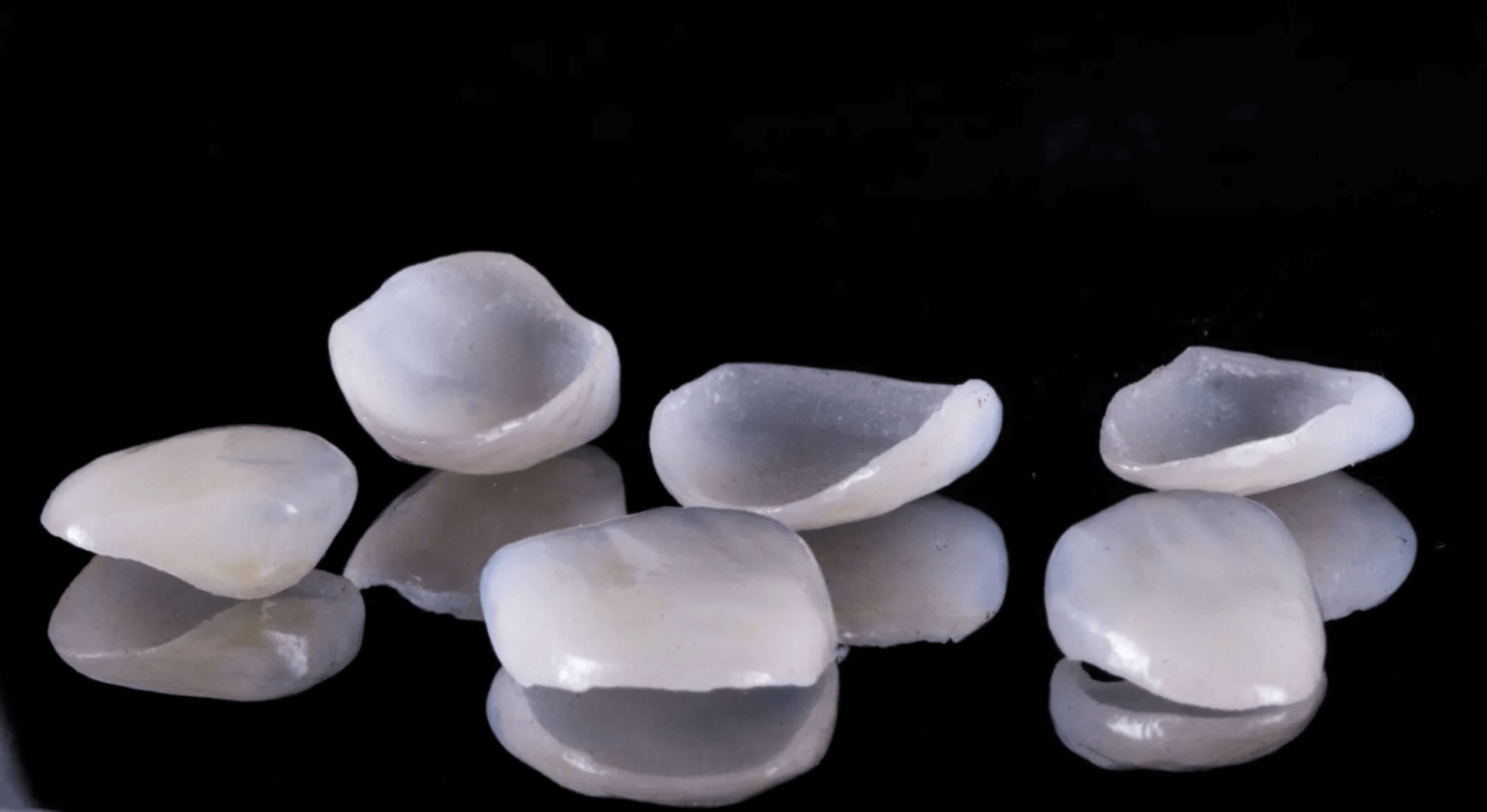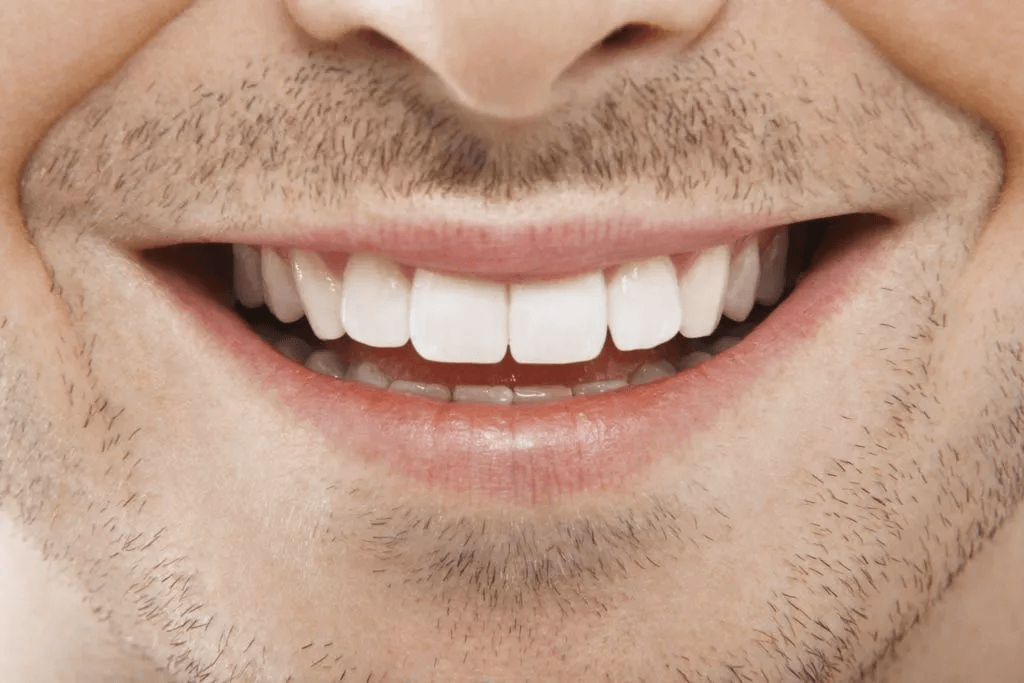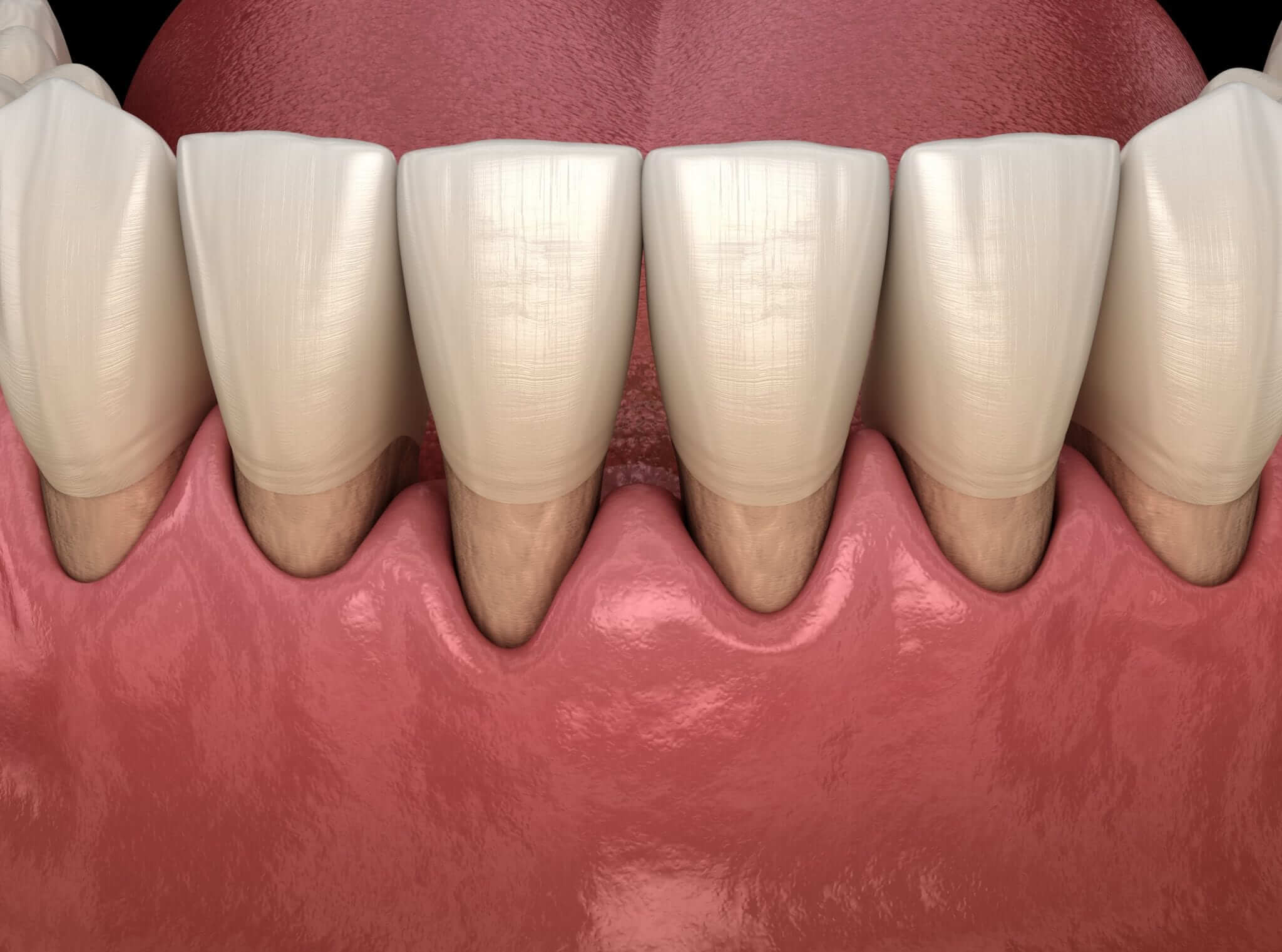Black triangles, also known as open gingival embrasures, are a common dental issue seen in about 30% of adults. Black triangles are the names given to the gaps between teeth because these gaps resemble black triangles when smiling. However, black triangles differ from diastema, or naturally-occurring gaps between teeth.
The key difference between having a gap between your teeth and having a black triangle is the amount of gum tissue present. With a black triangle, the papilla tissue, or gum tissue that exists between the teeth, is no longer present. Usually papilla tissue is lost due to gum recession or bone loss around the base of the tooth. This means that the gap between your teeth is higher up and usually appears by the gum line, rather than between the middle of your teeth.
Black triangles can cause both health and aesthetic issues. One of the major health concerns they pose is that they enable food and other debris to become stuck. This then gives way to the formation of plaque and tartar, which both feed the bacteria that cause gum disease and tooth decay. While plaque can usually be removed with proper brushing, tartar is much harder and can only be removed by a dentist or hygienist. The development of plaque and tartar along the gum line can also irritate the gum and cause it to recede further.
Other than the potential dental health issues black triangles can cause, they also bring up some aesthetic issues. For example, some people do not like their appearance because the gaps in between their teeth make them self-conscious or embarrassed. Others do not like the fact that air can flow between the gaps and make odd noises or bubbles while speaking.
Additionally, black triangles can make your teeth appear too large for your mouth because they expose too much enamel. The dark gaps can also make your teeth, smile, and overall facial appearance look older as well. It can also be frustrating after meals, because you are more likely to have that dreaded piece of broccoli stuck between your teeth.
To resolve black triangles, there are a number of dental treatments that Fedorciw, Massoumi, & Kolbig can perform. Such procedures include:
Veneers:
Dental veneers, also called porcelain veneers or laminates, are thin shells usually made from porcelain that are permanently cemented onto the front surfaces of teeth. They are a common cosmetic dental treatment that can correct a number of dental issues such as color, contour, and spacing. They work well for black triangles because they remove the gap and alter the tooth’s contour so that healthy gum tissue can begin to grow around the veneer.

There are two types of veneers: traditional and no-prep. While most dentists agree on the benefits of traditional veneers, not every dentist is in favor of no-prep veneers. In some cases, no-prep veneers are the best option, but most cases prefer traditional veneers. The difference between traditional and no-prep veneers is that traditional veneers require that a small amount of enamel is removed for their placement. This ensures that the veneer will sit smoothly on the teeth and not have a bulky appearance. Because no-prep veneers are ultra-thin, they do not require this step.
Orthodontics:
Orthodontic treatment, such as braces or Invisalign, can also be beneficial for alleviating black triangles. Orthodontic treatment works by applying direct pressure to certain parts of the teeth to encourage gradual movement towards proper alignment. However, orthodontic treatment works for black triangles only when diastema, or space between two teeth, is present.

By creating a contact point between two formerly spaced teeth, orthodontics gradually changes the soft tissue structures and can encourage new gingival growth, thus eliminating the black triangle. Orthodontics can also help by moving the tooth’s roots so that the entire tooth shifts into a more optimal position for proper gum growth. For example, teeth with widely spaced roots may need to be adjusted so that they roots are closer together. Then this creates a position that allows for more optimal gum tissue growth.
Dental Bonding:
Dental bonding, also commonly called composite bonding, is an easy, minimally-invasive approach to ridding your mouth of black triangles. With dental bonding, there is little to no preparation needed, meaning that your tooth structure will not be permanently altered. Instead, composite resin is layered on the affected area to add artificial tooth structure in places that it is currently lacking. By adding structure, the tooth’s shape will gradually change and the black triangles will be eliminated. What’s more, the composite resin is color matched to your natural tooth color and can be completely customized to blend in with your existing smile.

To apply dental bonding, your teeth will simply need to be cleaned to remove any debris and ensure there is a smooth surface for application. Then, the composite resin will be placed layer by layer. Each layer will be hardened before placing the next layer. The final layer will be properly shaped and polished so that it has a natural appearance. Once the procedure is over https://www.affordable-papers.net/, you can return to your usual activities.
Dental Crowns:
Another cosmetic dental solution that can eliminate black triangles are dental crowns. Dental crowns completely encapsulate the visible part of the tooth above the gum line. They are commonly recommended when a large amount of the tooth’s natural structure has been lost due to damage or decay. Because dental crowns fit over the entire tooth, they can completely change the shape and size of the tooth, eliminating the spaces that cause black triangles.

However, because dental crowns do cover the entire tooth, it means that the entire tooth must be prepared for the placement of a dental crown. To place a dental crown, the entire tooth will need to be filed down and properly shaped so that it can support a dental crown with a natural, non-bulky appearance. Once the tooth has been prepared, a digital scan will be taken of your mouth and used by our in-office milling machine to custom fabricate your dental crown while you wait.
Are you ready to say goodbye to your black triangles? Schedule a consultation with Fedorcwi, Massoumi, & Kolbig of Cromwell, CT today!




